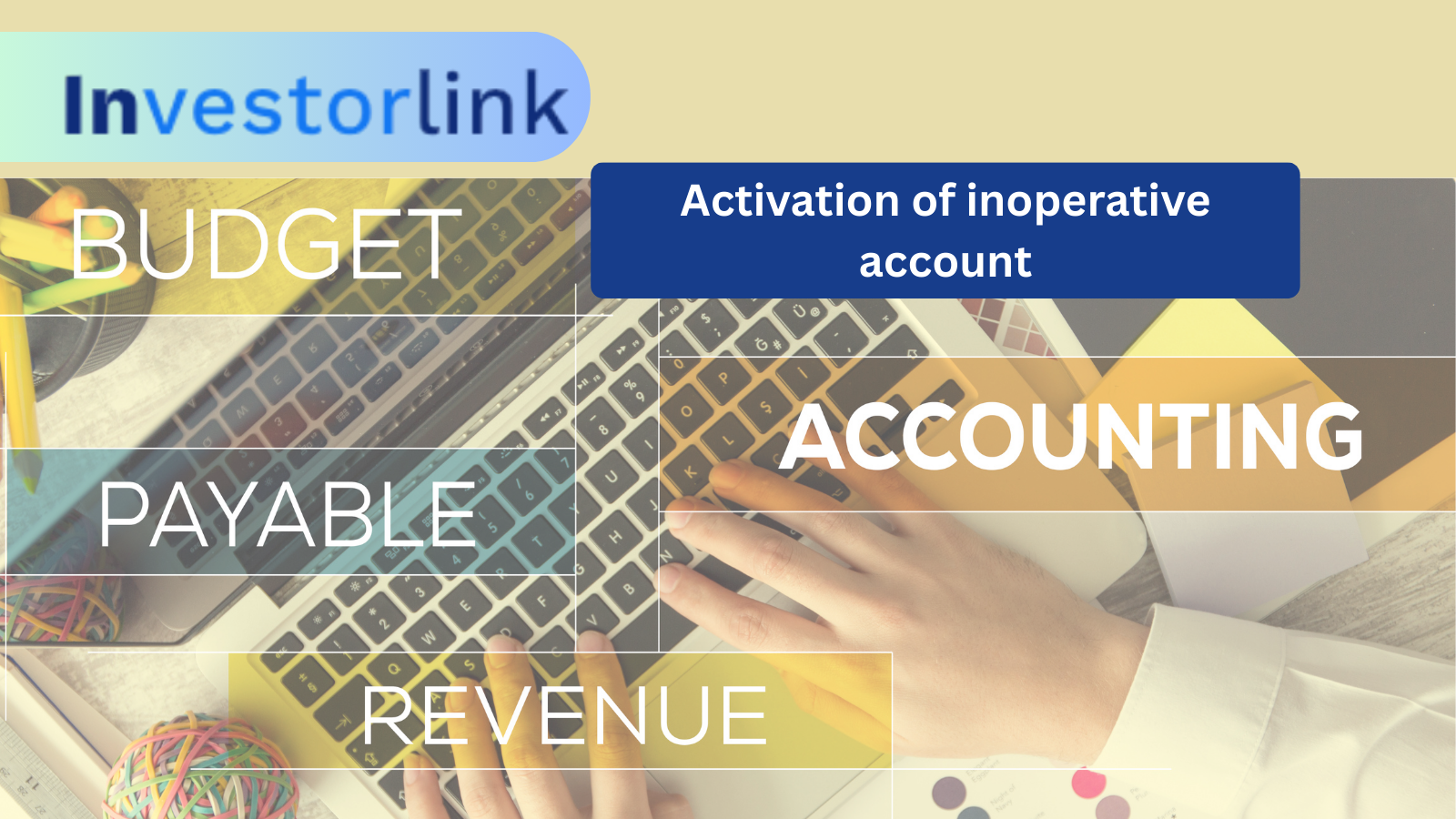Bank accounts often go into an “inoperative” or “dormant” status when they are not used for an extended period. Many account holders only realise this when they try to withdraw money, transfer funds, or use online banking and find that the account is blocked for transactions. In such cases, knowing the exact process of activation is essential to regain access to your funds and continue smooth banking. This article explains the complete process for activation of inoperative accounts online and offline, including the documents required, guidelines by the Reserve Bank of India (RBI), and tips to avoid future issues.
What is an Inoperative Account?
According to the RBI guidelines, a savings or current account is classified as “inoperative” if there are no customer-initiated transactions for two consecutive years. This includes:
- Not depositing or withdrawing cash
- No cheque issuance
- No online transactions initiated by the customer
It’s important to note that auto-credited interest, service charges, or bank deductions are not counted as valid transactions. Once an account becomes inoperative, the bank restricts certain services to safeguard against misuse.
Why Do Accounts Become Inoperative?
There are several reasons why accounts become dormant or inoperative:
- The account holder moved to another city and forgot about the old account.
The account was opened only for specific purposes (e.g., salary credit, loan, or investment) and was later unused. - No activity due to the death of the account holder (in which case, legal heirs must initiate a claim).
- Customers shifted to new accounts with better facilities, ignoring older ones.
Consequences of Having an Inoperative Account
While your money remains safe, having an inoperative account can create practical difficulties:
- Restricted withdrawal and deposit facilities.
- Inability to use debit cards, cheque books, and online banking.
- Rejected ECS/auto-debit transactions.
- Delay in accessing your own funds until the account is reactivated.
Therefore, timely activation is crucial.
Process for Activation of Inoperative Account
The activation of an inoperative account can be done either online (if the bank provides digital services) or offline by visiting the branch. The procedure is simple but requires proper documentation.
1. Activation of Inoperative Account – Offline Method
Most banks in India still follow the traditional offline procedure. The steps include:
-
Visit the Home Branch
-
Go to the branch where the account was originally opened.
-
Carry your passbook, cheque book (if available), and original ID proof.
Submit a Written Application
-
Write a simple application requesting the activation of your inoperative account.
-
Mention account number, customer ID, and contact details.
Provide KYC Documents
-
Submit self-attested copies of:
-
Aadhaar card or PAN card
-
Passport, voter ID, or driving license (as address proof)
-
Recent passport-sized photograph
-
-
Some banks may request in-person verification.
Deposit/Withdraw a Transaction Amount
-
Deposit or withdraw a nominal sum (₹500–₹1000, depending on bank policy) to mark customer activity.
-
This transaction helps the bank reactivate your account immediately.
Acknowledgement and Processing
-
The bank will update your records, and your account will be reclassified as “operative.”
-
You can start using ATM, cheque, and net banking facilities again.
2. Activation of Inoperative Account – Online Method
Many leading banks now allow customers to activate accounts digitally. Here’s how it usually works:
-
Login to Net Banking/Mobile Banking
Use your registered credentials to log in.
-
If access is blocked, request a temporary reset through customer service.
Submit an Online KYC Update
-
Banks often provide an option for updating PAN, Aadhaar, or address details online.
-
Upload scanned copies of valid KYC documents.
Request Reactivation through Service Requests
-
Go to the “Service Requests” or “Account Services” section.
-
Select the Reactivate Dormant Account option.
Complete an Online Transaction
-
Transfer funds from another account, or deposit through UPI/IMPS/NEFT.
-
A successful customer-initiated transaction will reactivate the account.
Confirmation from the Bank
-
The bank may send an SMS/email confirming that the account is active again.
Note: Not all banks provide full online activation. In some cases, even if you start online, you may still be required to visit the branch for KYC verification.
Documents Required for Reactivation
Typically, the following documents are needed:
- Identity Proof: Aadhaar, PAN, Passport, or Voter ID
- Address Proof: Aadhaar, Utility Bills, Passport, Driving License
- Photograph: Passport-size photo (in offline process)
- Application Form: Written or digital request for reactivation
RBI Guidelines on Inoperative Accounts
The RBI mandates that:
- Interest on savings accounts continues to accrue, even if the account is dormant.
- Banks cannot charge for keeping an account inoperative, except for regular service charges.
- Customers can reactivate accounts anytime by completing KYC formalities.
- Banks must notify customers before classifying accounts as inoperative.
Tips to Avoid Accounts Becoming Inoperative
- Do at least one transaction annually – deposit or withdraw funds.
- Use internet banking/UPI – small online transfers are enough to keep accounts active.
- Link Aadhaar/PAN – ensures regular KYC compliance.
- Keep your contact details updated – so you receive bank alerts and reminders.
- Close unnecessary accounts – instead of maintaining multiple unused accounts.
Conclusion
The activation of an inoperative account online and offline is a straightforward process but requires the right documents and a little effort. By submitting a simple application, updating KYC details, and initiating a transaction, account holders can restore full access to their funds.
With increasing digitization, many banks now allow online reactivation, saving customers time and hassle. Still, visiting the branch remains the most reliable way to ensure smooth activation.
To avoid inconvenience in the future, it’s best to keep your account active by making at least one customer-initiated transaction every year. After all, an active account not only secures your funds but also keeps your financial life hassle-free.



